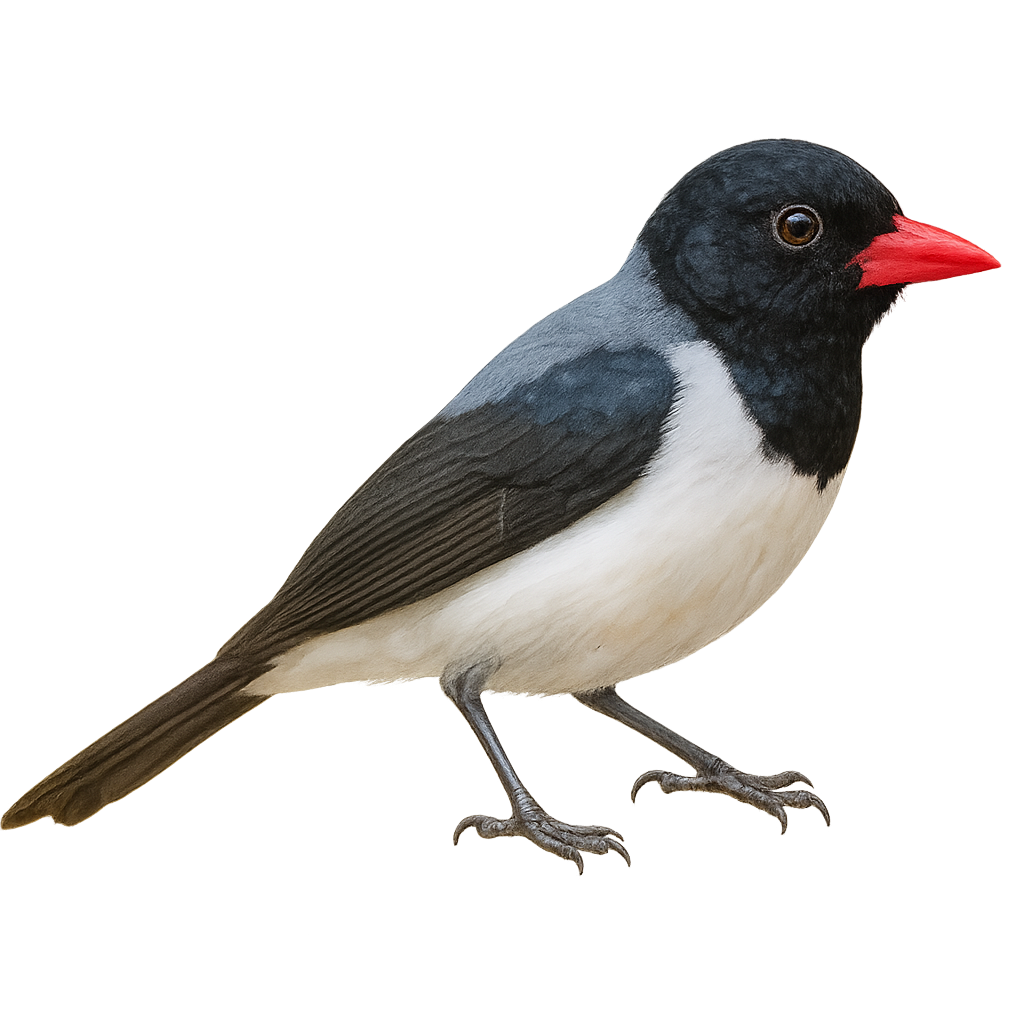Your wildlife photography guide.
Explore the red-billed pied tanager in detail, study its behavior, prepare your shots.
Where to observe and photograph the red-billed pied tanager in the wild
Learn where and when to spot the red-billed pied tanager in the wild, how to identify the species based on distinctive features, and what natural environments it inhabits. The WildlifePhotographer app offers tailored photography tips that reflect the red-billed pied tanager’s behavior, helping you capture better wildlife images. Explore the full species profile for key information including description, habitat, active periods, and approach techniques.
Red-billed Pied Tanager
Scientific name: Lamprospiza melanoleuca

IUCN Status: Least Concern
Family: THRAUPIDAE
Group: Birds
Sensitivity to human approach: Suspicious
Minimum approach distance: 10 m
Courtship display: September to November
Incubation: 12-13 jours
Hatchings: September to November
Habitat:
Tropical rainforests, secondary forests, forest edges
Activity period :
Primarily active during the day, with peak activity in the morning and late afternoon.
Identification and description:
The Red-billed Pied Tanager, or Lamprospiza melanoleuca, is a fascinating bird distinguished by its contrasting black and white plumage. This small passerine is primarily found in the tropical rainforests of South America, particularly in Brazil, Bolivia, and Peru. It prefers dense habitats where it can feed on fruits, insects, and small invertebrates. The Red-billed Pied Tanager is often seen in small groups, actively moving through the canopy in search of food. Although its song is not particularly melodious, it plays an essential role in communication among group members. Its ability to adapt to different forest types makes it a resilient bird in the face of environmental changes.
Recommended lens:
400mm – adjust based on distance, desired framing (portrait or habitat), and approach conditions.
Photography tips:
To photograph the Red-billed Pied Tanager, it is advisable to use a 400mm lens or longer to capture detailed images without disturbing the bird. Look for areas where these birds are actively feeding, such as forest edges, and be patient. Use a tripod to stabilize your camera and wait for the bird to perch in an advantageous position. The natural light of the morning or afternoon can provide ideal lighting to highlight the contrast of its plumage.
The WildlifePhotographer App is coming soon!
Be the first to explore the best nature spots, track rutting seasons, log your observations, and observe more wildlife.
Already 1 449 wildlife lovers subscribed worldwide

